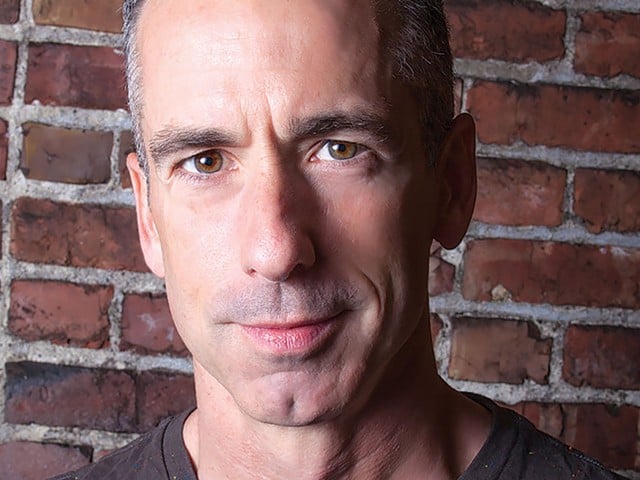Editor's Note: Brett Hankison has been found not guilty on all three counts of wanton endangerment. Check back in with LEO soon for a story on the verdict.
Former LMPD detective Brett Hankison’s wanton endangerment trial saw closing arguments on its sixth day Thursday, with prosecutor Barbara Whaley saying Hankison fired “wildly” and in the “wrong direction” during the botched 2020 raid on Breonna Taylor’s apartment and endangered the lives of the man, woman and 5-year-old child in the apartment next door to Taylor, who saw their home hit by bullets fired by Hankison.
“He is guilty under this law of wanton endangerment of Cody, Chelsey and five-year-old Zayden, whose head was on the pillow right in the corner of that bedroom closest to where the bullets were flying through,” Whaley told the jury in her closing argument, referring to Cody Etherton, his partner Chelsey Napper and Napper’s son. “He is who this case is about. A 5-year-old child.”
Hankison faces three counts of wanton endangerment in the first degree for shots he fired that passed through a wall and entered the apartment next door to Taylor’s home. Neither he, nor any other officers, are charged in her death. He was fired from LMPD for “blindly” firing 10 shots during the March 13, 2020 raid on Taylor’s home and displaying an “extreme indifference” to the value of human life — language that mirrors Kentucky’s wanton endangerment law.
In the raid, Sgt. Jonathan Mattingly was hit in the leg with a 9mm bullet fired by Taylor’s boyfriend Kenneth Walker as the door to the apartment was breached. Walker fired one shot. Police responded with 32 shots, all .40 caliber bullets fired from pistols. Hankison testified that when the door opened he saw a figure in a “combat shooting stance” who was firing what Hankison believed to be a rifle. Hankison then moved around the corner, out of the breezeway in front of Taylor’s door, and fired 10 rounds through a sliding-glass door and bedroom window. Both the window and the sliding-glass door were covered with blinds and curtains.
With the defense and prosecution making their closing arguments on Thursday, 12 jurors are now in deliberations.
Addressing the jury for more than an hour on Thursday, Whaley maintained that Hankison was never in the line of fire that night, could not see what he was shooting and put lives in danger.
“His wanton conduct could have multiplied one tragic death — Breonna Taylor’s — his wanton conduct could have multiplied her death by three. Easily,” said Whaley.
In brief closing arguments that lasted just 24 minutes, defense attorney Stew Matthews said Hankison did what he had to do that night to preserve the life of his “brother officers” in a situation in which he believed he was facing rifle fire.
“He simply reacted as, I would believe, that most police officers would react when danger presented itself,” he said.
Hankison’s bullets passing through the common wall into the neighboring apartment was “a terrible thing,” Matthews said.
However, he added, “It’s not criminal, ladies and gentlemen. It’s kinda like what you might call collateral damage.”
At one point, Matthews likened Hankison’s actions during the raid on Taylor’s apartment to the first responders who rushed towards the World Trade Center in New York City during 9/11 attacks despite the danger present.
“When the planes struck the Twin Towers on September 11th, there were pictures of people running away from the smoke and the debris and everything that was coming down,” said Matthews. In those same photos, he said, there are “police officers and firefighters running towards that danger. That’s what fire — or what emergency personnel are taught to do. They run toward the danger. And that’s what Brett Hankison did here.”
Whaley pushed back against claims that a rifle may have been present, saying there was no evidence that a rifle had been fired and asserting that there “never” was a rifle at the scene.
But, by believing there was a person with a rifle in Taylor’s apartment and putting out a radio call requesting officers responding to the scene respond with long guns, Hankison put Etherton, the neighbor, “at even more risk of serious physical injury or death.”
Etherton testified that LMPD officers responding to the scene trained rifles on him as he approached his apartment’s shattered sliding-glass door. Body camera footage that played in court earlier in the trial showed an officer pointing his rifle at Etherton’s apartment.
Towards the end of her closing argument, Whaley said that Hankison’s “wild shooting with no target, with no reason, put other officers in jeopardy.”
Matthews also continued to argue that Hankison did not know of the existence of the apartment next door to Taylor’s.
“I would submit to you that Brett Hankison did not know that there was an apartment behind Breonna Taylor’s that his bullets could go into,” said Matthews. “And I would submit that even if he had, he did what he thought he had to do in that instant.”
In her closing argument, Whaley flatly rejected Matthew’s assertion, saying there was “no way” an officer could not have known there were other apartments there and showing a picture of how close together doors were in the breezeway outside the entrance to Taylor’s home.
Overall, Matthews said, Hankison “reacted as, I would believe, that most police officers would react when danger presented itself.”
If convicted, Hankison could face up to five years in prison for each of his three charges.
For the rest of our trial coverage, go here.
Keep Louisville interesting and support LEO Weekly by subscribing to our newsletter here. In return, you’ll receive news with an edge and the latest on where to eat, drink and hang out in Derby City.
Follow us on Facebook, Twitter and Instagram.






